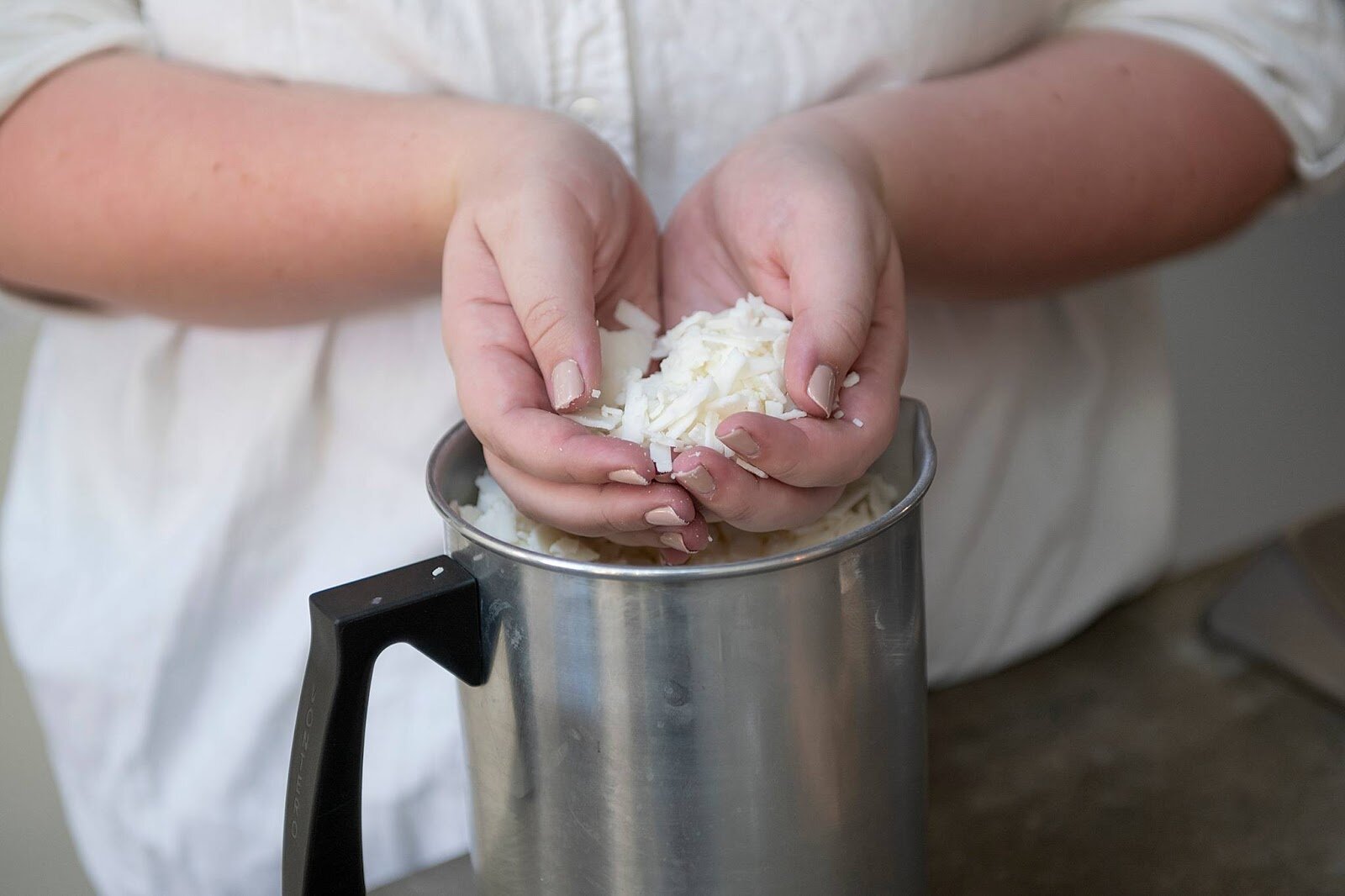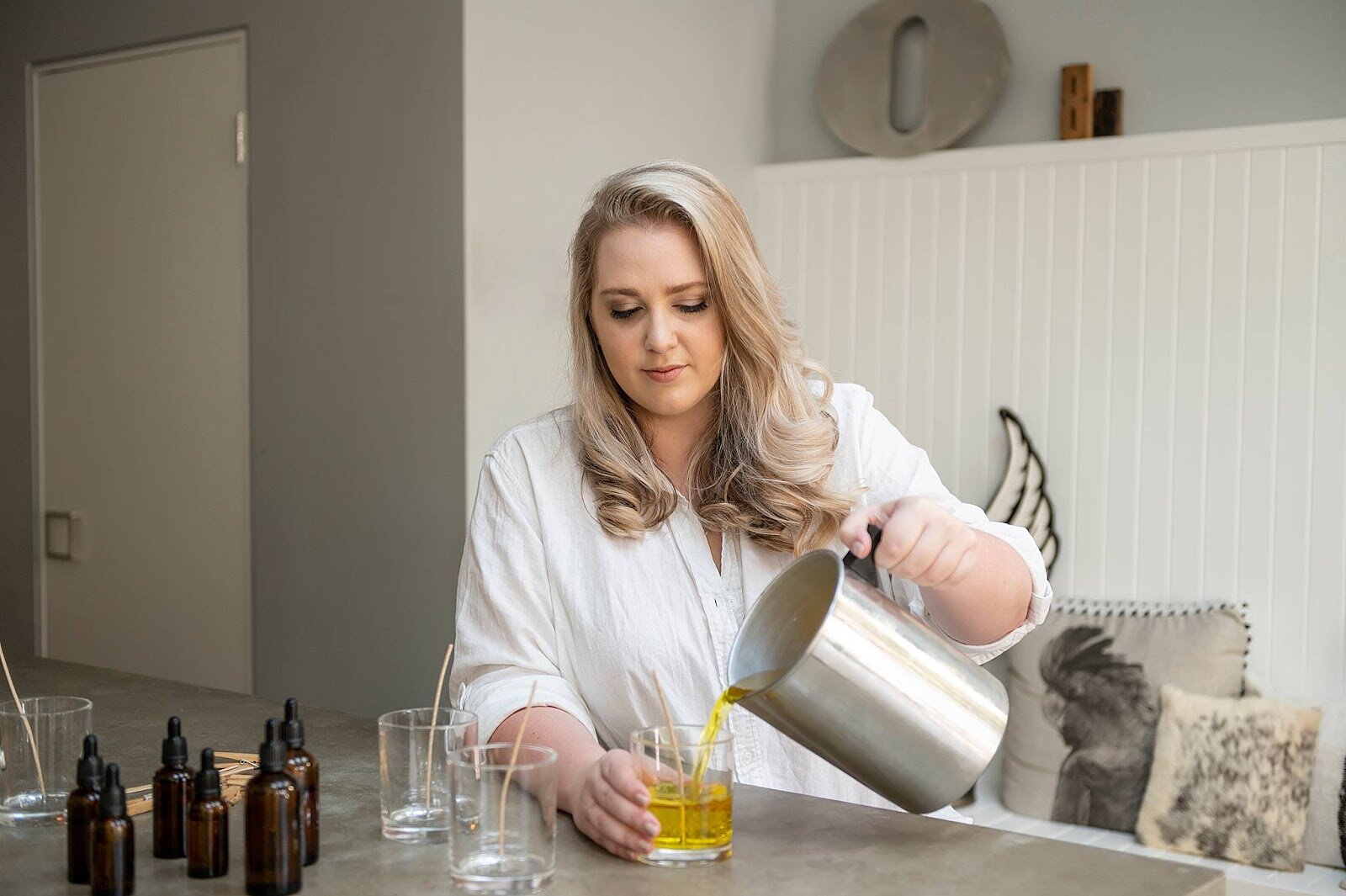Five Candle Making Tips For Beginners
Five Tips For Candle Making Beginners
Easy to remember tips and tricks that will take you from a candle making beginner to a pro in no time!
Learning to make candles is a challenging and rewarding feat. Lighting the wick on your very first handmade candle is exciting and can be nerve-wracking as you wait to see how your candle performs.
Did the top set smoothly like you thought it would? Is your wick centred? How is the fragrance throw? So many questions and your newly made candle is about to give you some answers.
But, what if we could share some advice to help your candle making and skip some of the drama and nerves of your new hobby? Read on as I share five big tips that I wish I’d learned sooner in my candle making career.
Make notes as you go
Less can be more with fragrance
Cold throw and hot throw can vary greatly for each fragrance oil
Practice patience
There is no ‘one-way’ to make a great candle
1. Make notes as you go
Candle performance is a result of science. To get the same result each time, you need to do the same thing each time but more importantly, you need to know what works!
Keep a log of notes from each batch you pour and as you test-burn. A few important things to note with every pour:
Date and time
Wax type
Fragrance type
Wick size
Glass size
Room temp
Highest melt temp of wax (check the manufacturers recommendations on this as each wax is different and you don’t want to heat higher than necessary)
Temp you added fragrance
Temp you poured the candle/s
% of fragrance used
The easiest way to do this is to create your own template for every test candle, or if you’re lazy like me, just download the sheet from All Seasons Wax Company. Here’s a link to our free Candle Testing Sheet.
It’ll work for any wax type and is quite thorough. Print a few sheets off and have them handy wherever you make your candles and when you test them.
A great place to start when looking for candle making supplies is to check out our distribution partners.
Note: If you’re anything like me and you have a terrible memory, try to make the notes as it happens. Expecting yourself to remember is setting yourself up to fail and testing the same candle over and over is going to cost you time and money.
2. Less can be more with fragrance
It seems pretty logical. More fragrance = better fragrance throw. But the combination of wax and fragrance is complicated and there are a LOT more variables at play. This is why testing is vital.
Some fragrance oils are simply stronger and don’t need much to give you a great fragrance, others will require more fragrance oil but just won’t perform with the same intensity as others.
As a recommendation, check out our wax comparison page to learn more about the fragrance tolerance of each of our waxes.
Experimenting with fragrance oil percentages, pour temperatures, cure time, etc, will all affect the hot throw of your candle and it’s a much better investment of your time to spend it on these tests than adding in more fragrance oil.
3. cold throw and hot throw can vary greatly for each fragrance oil
Cold throw is the fragrance from your candle when it’s not lit, hot throw is the scent when the wick is lit and the candle is emitting fragrance and “out of the bottle” is that first whiff of the fragrance oil out of the bottle.
Each of these can provide quite a different experience for your nose, so expect that the smell “out of the bottle” can be a bit different to the result of your finished candle. This is another reason why candle testing is so important.
Base, middle and top notes will all shine through at different times and in different intensities. It’s important to remember that your candles will likely be smelled first by customers via cold throw, then taken home where they’ll experience the hot throw.
The hot throw is usually the most complex scent and that’s when the full depth of the fragrance is experienced. Don’t be afraid to try fragrances that you’re not sure about “out of the bottle”, as the fragrance will change from cold throw to hot throw regardless!
4. Practice patience!
Patience is a virtue and particularly when it comes to candle making.
Testing takes time. Curing your candles takes time (generally a week or two weeks gives primo results for your fragrance, depending on the oil). Perfecting your skills and finding a favourite wax takes time, too.
Testing over the seasons is advantageous too, as you’ll know that your candles will perform reliably over the warmer and cooler months. This is particularly important if you’ll be burning candles in areas with a varied climate (or if you plan on selling candles to people from over the country or across the world!).
5. There is no ‘one way’ to make a great candle
Unfortunately there’s no secret recipe or golden ticket to creating candles that work and work well. Asking around for advice can be helpful and so can reading up on the topic or watching videos on YouTube, but after enough testing and experimenting, you’ll find a method which may be completely your own.
Conclusion
Candlemaking is a great way to practice mindfulness and the act is even shown to improve your mental wellbeing. Using your creativity to find new fragrances and mix them with wax is so rewarding. There is so much opportunity and potential in the candle making world. You’ll find better results sooner if you can make notes as you go, use high quality candle making supplies find the right fragrance ratio for each scent, experiment with different fragrances, practice patience and find your own method for making.
About the author
Leonie O’Brien is the owner and creator at Pretty Frank, where she makes soy wax candles with a tree planted for every candle. She focuses on building a green and sustainable brand with high-performing candles.
She writes for her own blog at PrettyFrank.com.au, as well as major industry players like All Seasons Wax Co, Long Story Short Design and Print and Auzi Insurance.
When she’s not making candles or writing blog posts, you’ll find her with her handsome Kelpie x named Frank.



